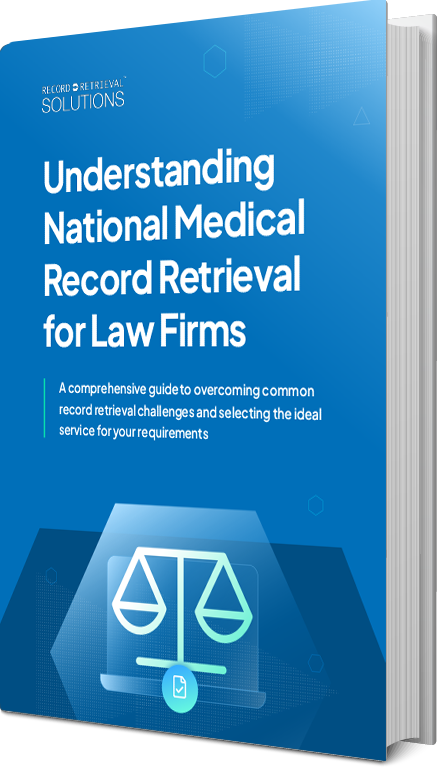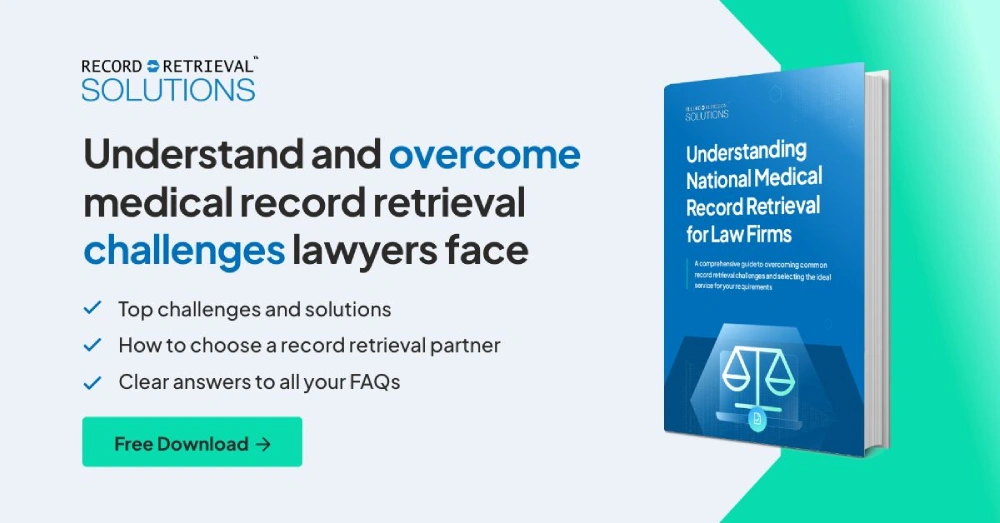Disadvantages of Paper Medical Records
Paper medical records, while historically the foundation of healthcare documentation, present several disadvantages in modern medical practice. One significant drawback is their vulnerability to physical damage; they can easily be destroyed by water, fire, or simply lost in transit, leading to irreversible loss of critical patient information. Additionally, the physical nature of paper records requires extensive storage space, which can become impractical and costly for healthcare facilities as patient volumes grow. This method of record-keeping also involves labor-intensive processes for filing, retrieving, and maintaining records, making it inefficient compared to digital solutions.
Furthermore, paper records often lead to inefficiencies in communication among healthcare providers. Information contained in paper files is not easily shared, especially across different healthcare facilities, which can delay patient care and lead to fragmented healthcare delivery. This lack of accessibility and real-time sharing can also contribute to errors in patient care, as providers may not have the most current or complete information readily available. In contrast, electronic records can be updated instantaneously and accessed by multiple providers simultaneously, ensuring that all relevant healthcare professionals have access to the latest patient data, which is crucial for effective diagnosis and treatment.
Lack of Accessibility
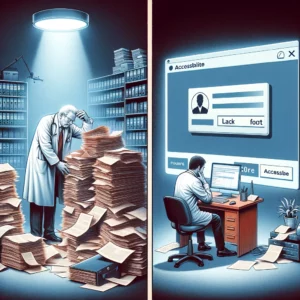
Additionally, the inability to access paper medical records remotely hinders the efficiency and effectiveness of healthcare delivery. In an era where telemedicine is becoming increasingly prevalent, the reliance on physical records can be a significant drawback. Doctors working remotely may need to make treatment decisions without complete information, potentially compromising patient safety and care quality. For patients, the inability to easily access their own medical histories can frustrate their efforts to stay informed about their health conditions or to share important health information with new healthcare providers. This lack of accessibility not only affects the immediacy of medical interventions but also impacts ongoing health management and patient satisfaction.
Risk of Damage or Loss
Paper medical records are inherently vulnerable to various forms of physical damage, including fire, water, and the natural wear and tear associated with aging. Such damage can lead to the deterioration or complete destruction of critical patient information. In situations where records are damaged by fire or water, the loss is often irreversible, compromising the ability to provide continuous and informed care to patients. This susceptibility underscores the risks associated with maintaining physical documentation, where a single adverse event could erase years of vital health data essential for both ongoing patient management and historical medical research.
Moreover, the risk of misplacement or loss is another significant drawback of relying on paper records. In busy medical environments, where multiple hands may handle numerous records daily, it is all too easy for documents to be misplaced, misfiled, or accidentally discarded. The loss of these documents can lead to gaps in a patient’s health history, potentially affecting diagnoses, treatment plans, and the overall quality of care provided. The permanent loss of patient data not only disrupts medical practices but also poses a severe issue in legal contexts, where documented medical records are crucial for evidence in litigation and compliance with regulations. This highlights the critical need for more secure, reliable methods of storing and managing health information.
Inefficient Space Usage

Moreover, the requirement for extensive physical storage for paper records can limit a healthcare facility’s flexibility to expand other critical services. Space that could be used for additional treatment areas, more medical equipment, or expanded patient care services is instead consumed by bulky filing cabinets and storage units. This inefficient use of space is particularly problematic in urban healthcare settings where space is at a premium and the cost per square foot is high. Transitioning to electronic medical records (EMRs) can alleviate these space constraints, freeing up resources to enhance patient care and accommodate growing service demands. This shift not only optimizes the use of physical space but also contributes to a more streamlined and efficient healthcare environment.
Time-Consuming
The traditional system of using paper records is a notably time-consuming process that involves manual searching, retrieving, and managing of files. Healthcare providers often spend a significant amount of time navigating through extensive filing systems to locate specific patient records. This manual retrieval process is not only slow but also prone to errors, which can further delay the availability of necessary information. For busy medical practitioners, these delays can accumulate, reducing the time they have available for direct patient care. This inefficiency can affect the overall productivity of healthcare facilities, as staff must allocate more time to administrative tasks related to record management rather than focusing on clinical duties.
Moreover, the labor-intensive nature of handling paper records significantly reduces the efficiency of healthcare services. Each interaction with a paper record—from updating patient details to sharing information with other healthcare providers—requires physical handling, copying, and sometimes mailing, which consumes additional time and resources. In emergency situations, the inability to swiftly access vital patient information can have critical consequences on the delivery of care. Transitioning to electronic health records (EHRs) can dramatically improve these inefficiencies by enabling instant access to patient data, seamless updates, and easy sharing among authorized practitioners, thereby enhancing the speed and quality of healthcare services provided.
Limited Sharing and Collaboration
Paper records inherently limit the sharing and collaboration capabilities among healthcare providers. Each physical document can only be in one place at a time, making it challenging to share crucial patient information quickly and securely among different departments or healthcare facilities. This logistical limitation significantly hinders the ability of medical teams to work together effectively, especially in complex cases where multidisciplinary collaboration is essential. The inability to share records easily can lead to a fragmented approach to patient care, where not all practitioners have access to the same comprehensive data. Consequently, this can result in uncoordinated care, where different parts of a patient’s treatment are not harmoniously aligned, increasing the risk of medical errors and compromised patient safety.
The difficulty in sharing paper records can exacerbate issues related to continuity of care, particularly when a patient transitions between care settings—such as from a hospital to a rehabilitation center, or from a general practitioner to a specialist. Each transfer can potentially introduce delays as paper records are copied, mailed, or manually transferred, increasing the risk of data being outdated, incomplete, or inaccurately transcribed. This disruption in the continuity of information can lead to critical oversights, such as duplicated tests, conflicting treatments, or missed diagnoses, all of which not only affect the quality of patient care but also inflate healthcare costs unnecessarily. The shift towards electronic health records (EHRs) aims to mitigate these issues by providing a platform for instant and secure data exchange, ensuring that every healthcare provider has real-time access to accurate and complete patient information.
High Cost
The maintenance of paper medical records incurs significant costs that extend beyond just the initial printing. These expenses include the physical materials needed for printing—paper and ink—as well as the costs associated with storage facilities, which often require secure, climate-controlled environments to prevent damage. Additionally, the labor costs associated with managing these records, from filing and retrieving to maintaining and eventually destroying outdated records, can be substantial. These processes not only require extensive human resources but also consume valuable time that could otherwise be devoted to patient care or other critical activities within healthcare settings.
In comparison, electronic records offer a more cost-effective solution over the long term. While the initial setup for an electronic health records (EHR) system can be considerable, including software acquisition and training costs, these are often offset by the savings from reduced physical storage needs and the streamlining of record management processes. Digital records eliminate the need for physical space to store documents and reduce the manpower required for managing information. Moreover, electronic systems enhance efficiency by simplifying the tasks of updating, searching, and sharing patient data, which can lead to further operational savings. Overall, the shift from paper to electronic records represents not only an advance in healthcare technology and efficiency but also a potential reduction in the ongoing operational costs of healthcare providers.
Benefits of Transitioning to EMRs for Personal Injury Attorneys
Improved Efficiency and Organization

The advanced keyword search functionalities inherent in EMRs represent a substantial improvement over manual document sifting. In the paper-based system, locating a specific piece of information could involve leafing through numerous files and folders, which is not only slow but also prone to human error. EMRs, however, allow healthcare professionals to use specific search terms to quickly navigate through extensive data, pinpointing the exact information needed within seconds. This capability significantly cuts down on the administrative burden and increases the time healthcare staff can dedicate to patient care, improving overall productivity and reducing potential frustrations caused by delays in accessing vital information.
For personal injury attorneys, the organizational benefits and accessibility of EMRs translate into more efficient case management. Having organized and readily accessible medical data allows attorneys to review and analyze a client’s medical history more effectively, enabling them to build stronger cases. This can be particularly crucial in demonstrating the extent of injuries and the impact on the client’s life, which are key components in negotiating settlements or preparing for trial. Moreover, the time saved by using EMRs frees up resources, allowing law firms to handle cases more efficiently and effectively, ultimately leading to better outcomes for their clients and potentially higher caseload capacities.
Enhanced Collaboration and Communication
Electronic Medical Records (EMRs) play a pivotal role in enhancing collaboration and communication among healthcare professionals. By allowing secure sharing of medical records, EMRs enable seamless exchanges of patient information among physicians, specialists, and other medical staff within or across healthcare institutions. This connectivity fosters a more collaborative environment where medical experts can easily access and discuss patient data, leading to more informed and collective decision-making. Such enhanced team collaboration is particularly critical in complex cases requiring multidisciplinary care, ensuring that all treating professionals are on the same page regarding a patient’s treatment plan and progress.
The use of EMRs significantly expedites casework and enhances communication, not only among healthcare providers but also between medical and legal professionals. For personal injury attorneys, for instance, quick electronic access to comprehensive medical records streamlines the process of gathering necessary evidence for cases. This efficiency leads to smoother case proceedings as attorneys can more rapidly obtain, review, and utilize medical data to support their client’s claims. Moreover, EMRs facilitate better communication with healthcare providers by providing a clear, organized, and up-to-date record of medical treatments and outcomes, which can be critical during legal consultations and testimonies.
However, the electronic sharing of medical records, while beneficial, must strictly adhere to HIPAA (Health Insurance Portability and Accountability Act) regulations to ensure patient privacy and data security. HIPAA compliance is essential to protect sensitive patient information from unauthorized access and breaches. EMR systems are designed with built-in security features such as encryption, access controls, and audit trails to safeguard data and comply with these regulations. These features not only prevent potential legal repercussions for healthcare providers but also maintain the trust of patients in the confidentiality and integrity of their health information. By ensuring compliance with HIPAA, EMRs contribute to a secure healthcare system where information can be freely shared among authorized parties without compromising patient privacy.
Streamlined Discovery Process

This heightened efficiency in the discovery process can also lead to substantial cost savings for both legal professionals and their clients. In legal cases, especially those involving personal injury or medical malpractice, the ability to quickly obtain comprehensive medical records is crucial for building a strong case. Faster access means attorneys can review and analyze the necessary information sooner, which speeds up case preparation and can lead to quicker resolutions or settlements. This not only reduces the time legal professionals spend on each case, thereby lowering their operational costs, but it also decreases the financial burden on clients who often face prolonged periods of uncertainty and stress while awaiting the outcomes of their cases.
Moreover, the streamlined discovery process enabled by EMRs fosters a more dynamic and responsive legal environment. Attorneys can more effectively manage their caseloads with improved access to vital information, allowing them to respond more promptly to case developments and client needs. This responsiveness is particularly beneficial in jurisdictions where legal proceedings are time-sensitive, and delays can affect case outcomes. By leveraging the capabilities of EMRs, legal practitioners not only enhance their service quality but also strengthen the justice delivery system, ensuring that crucial medical evidence is both accessible and effectively utilized in the adjudication process.
Stronger Case Building
The comprehensive data contained within Electronic Medical Records (EMRs) significantly enhances the ability of attorneys to build stronger cases, particularly in personal injury and medical malpractice suits. These detailed records provide an in-depth view of a client’s medical history, allowing legal professionals to accurately identify and document any pre-existing conditions that may be relevant to the case. Additionally, EMRs can reveal instances of missed or incorrect diagnoses that may have contributed to the client’s current condition. This level of detailed medical insight is crucial for constructing a factual and compelling narrative that supports the client’s claims, demonstrating how specific medical events are tied to the alleged malpractice or injury.
Moreover, the detailed medical records available through EMRs can substantiate arguments regarding the extent of injuries suffered by a client. For instance, comprehensive documentation of treatment timelines, diagnostic tests, and prescribed medications allows attorneys to provide concrete evidence that supports their assertions about the severity and impact of injuries. This evidence is instrumental in quantifying damages and can play a pivotal role during negotiations or trial proceedings. By clearly illustrating the medical and financial implications of the injuries, attorneys can argue more persuasively for the compensation their clients deserve, thereby enhancing the effectiveness of their legal representation.
Furthermore, the accessibility and reliability of data from EMRs contribute to the overall strength of legal arguments presented in court. Reliable medical records are essential for establishing credibility in the eyes of a judge or jury. When attorneys present well-documented medical evidence from EMRs, it not only reinforces the legitimacy of the injury claims but also demonstrates a commitment to thorough, evidence-based case preparation. This level of detail and precision can make a significant difference in the outcome of legal proceedings, often tipping the scales in favor of the client. Thus, EMRs are not just tools for record-keeping; they are vital assets in the arsenal of legal professionals aiming to secure justice and appropriate compensation for their clients.
Challenges of Transitioning to EMRs
Initial Investment Costs
Implementing an Electronic Medical Record (EMR) system involves substantial initial investment costs that can be a significant consideration for healthcare practices. The expenses associated with setting up an EMR system vary widely and are influenced by several factors including the complexity of the system’s features, the scale of the deployment, and the specific needs of the practice. For instance, a large hospital will likely require a more sophisticated system with extensive customization and integration capabilities compared to a small private practice. These systems also require robust hardware, software licensing, and secure networking infrastructure, all of which contribute to the upfront costs. Additionally, there are often substantial costs related to the migration of existing paper records to the new digital system, along with training for medical and administrative staff on how to effectively use the new system.
Beyond the direct costs of purchasing and installing the software, practices must consider the ongoing maintenance and support costs as well as potential upgrades. The choice of an EMR system should also take into account its scalability and flexibility to accommodate future growth or changes in healthcare regulations, which might necessitate additional investments. Moreover, while the initial financial outlay can be daunting, the long-term benefits such as improved operational efficiencies, reduced errors, enhanced compliance with regulatory requirements, and potential incentives for using certified technology can offset these initial costs. Therefore, when evaluating the costs of EMR systems, healthcare providers should consider both the immediate financial impact and the long-term return on investment that these digital tools offer.
Learning Curve and Staff Training
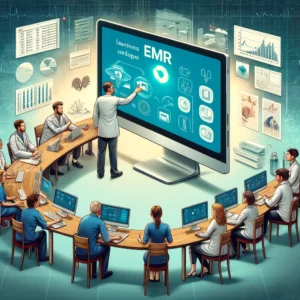
To minimize these disruptions, comprehensive and ongoing training programs are essential. These programs should be tailored to meet the varied needs of different user groups within the healthcare facility, providing both general knowledge and role-specific instructions. It’s also beneficial to have continuous support available, either in-house or from the EMR vendor, to address any issues as they arise and to provide refresher courses or updates on new features. Moreover, investing in thorough training upfront can significantly enhance the efficiency and effectiveness of the system’s utilization in the long run. Despite the initial challenges and learning curve, the long-term benefits of well-trained staff who are proficient in using EMR systems include improved data accuracy, enhanced security, and a more streamlined healthcare delivery process, ultimately leading to better patient outcomes.
Data Security Concerns
The adoption of Electronic Medical Record (EMR) systems brings significant data security concerns to the forefront of healthcare management. As EMRs store highly sensitive patient information, including personal and medical data, they become prime targets for cyber threats such as hacking, data breaches, and unauthorized access. The potential for such security risks necessitates robust protective measures to ensure the integrity and confidentiality of patient records. The complexity of EMR systems, which often integrate various healthcare networks and exchange data across platforms, further complicates the security landscape. Ensuring that these systems are resistant to attacks requires continuous monitoring, advanced encryption methods, secure user authentication protocols, and regular updates to safeguard against emerging vulnerabilities.
Compliance with the Health Insurance Portability and Accountability Act (HIPAA) is crucial for any healthcare facility employing EMR systems. HIPAA sets stringent standards for the protection of patient information by mandating administrative, physical, and technical safeguards. These include conducting risk assessments, implementing secure access controls, and ensuring that all data transfers are encrypted. Failing to comply with HIPAA regulations can lead to severe penalties, including hefty fines and loss of patient trust. Therefore, healthcare providers must not only adopt EMR systems that offer comprehensive security features but also engage in regular training for all staff members to understand and effectively implement HIPAA compliance measures. This dual focus on advanced security technology and stringent regulatory compliance helps minimize data security risks and protects patient information within the digital healthcare infrastructure.
Compatibility Issues
Compatibility issues between different Electronic Medical Record (EMR) systems can significantly hinder the seamless exchange of information among healthcare providers. Each EMR system might be designed with unique specifications and functionalities that may not align well with other systems. This disparity can lead to significant challenges in interoperability—the ability of different information systems and software applications to communicate, exchange data, and use the information that has been exchanged. As a result, critical patient information might not be readily accessible or could be misinterpreted when transferred between providers using disparate EMR systems. Such barriers not only complicate collaborative patient care but also increase the risk of errors, potentially affecting patient safety and treatment outcomes.
The lack of standardization in data formats across EMR systems exacerbates these compatibility issues. Without a common standard, data must often be converted as it moves from one system to another, a process that can lead to loss of data integrity or errors in data interpretation. Standardizing data formats would enable more straightforward and reliable data exchange, supporting more accurate diagnoses and more coordinated care. Initiatives such as the adoption of standardized healthcare data protocols and the development of universal EMR software guidelines are crucial for addressing these compatibility issues. By focusing on creating and enforcing such standards, the healthcare industry can improve EMR system interoperability, ultimately leading to enhanced healthcare delivery and patient outcomes.
Considerations for Choosing an EMR System
Identifying Needs and Features
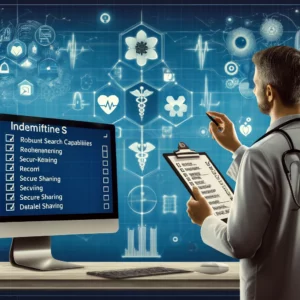
Evaluating Vendor Reputation and Support
Evaluating a vendor’s reputation and support structure is a pivotal aspect of selecting an Electronic Medical Record (EMR) system. For healthcare providers, it’s vital to partner with vendors that have a proven track record of reliability and excellence in the healthcare sector. A reputable vendor will have established a history of successful implementations, showcasing their capability to handle the complexities of various healthcare environments. This includes adherence to the latest healthcare regulations and standards, consistent software updates to address emerging threats and needs, and a strong customer base that can testify to their product’s effectiveness and reliability. Furthermore, longevity and stability in the market are good indicators of a vendor’s resilience and commitment to future support.
Alongside vendor reliability, the level of customer support and training provided is equally important. Effective support ensures that any technical issues can be promptly addressed, thereby minimizing downtime and maintaining continuity in patient care services. Comprehensive training programs are critical to help staff navigate new systems efficiently, ensuring that the transition does not hinder day-to-day operations. These programs should cover all functionalities of the EMR system and be adaptable to accommodate different learning styles and paces. Moreover, ongoing support, such as help desks, user forums, and regular updates, plays a crucial role in adapting to evolving healthcare practices and technologies, thus safeguarding an investment that is vital to both the operational success of healthcare providers and the quality of care they provide.
Security Measures and Compliance
Ensuring strict adherence to HIPAA (Health Insurance Portability and Accountability Act) regulations is vital when implementing any Electronic Medical Record (EMR) system. Compliance is not just a legal requirement but a fundamental aspect of maintaining trust and confidentiality in patient-provider relationships. HIPAA sets the standard for protecting sensitive patient data, and failure to comply can lead to significant fines and damage to a healthcare provider’s reputation. It requires that all entities that handle health information have appropriate safeguards to ensure the privacy and security of protected health information. Therefore, when choosing an EMR system, it is crucial to verify that the system complies with all HIPAA requirements, including those pertaining to privacy, security, and breach notifications, ensuring that patient data is handled securely throughout every process.
In addition to regulatory compliance, the evaluation of a vendor’s data security measures is equally critical. This includes researching the types of encryption methods and security protocols they implement to protect data both at rest and in transit. Encryption is essential for protecting data from unauthorized access, and strong security protocols help defend against data breaches and cyber attacks. A robust EMR system should employ industry-standard security measures such as SSL/TLS for data transmission and AES encryption for storing data. Prospective users should inquire about the vendor’s history of security breaches, if any, and assess their responses to such incidents. It is also advisable to understand the vendor’s policies on data ownership and access, particularly in scenarios where switching vendors or discontinuing service. These considerations are crucial for ensuring that the EMR system not only enhances operational efficiency but also robustly secures sensitive patient data against evolving cybersecurity threats.
Ease of Use and Scalability
When selecting an Electronic Medical Record (EMR) system, ease of use is a critical factor that can significantly influence staff adoption and overall satisfaction. A user-friendly interface that is intuitive and simple for staff to navigate enhances the efficiency of daily operations and reduces the learning curve associated with adopting new technology. This is especially important in a high-paced environment like healthcare, where time is often of the essence, and staff cannot afford to be bogged down by complicated software. An EMR system that offers a clean, logical layout, straightforward navigation paths, and clear, concise information displays will help staff perform their tasks more efficiently and with fewer errors. Additionally, features such as customizable dashboards, one-click reporting, and the ability to easily access and input patient data can further streamline workflows and improve user engagement.
Scalability is another crucial aspect of selecting an EMR system, particularly for growing practices or those planning to expand in the future. A scalable EMR system is designed to grow along with your practice, accommodating an increasing number of users, more complex workflows, and a larger patient base without compromising performance or user experience. This includes the ability to integrate with other systems, add new functionalities, or increase storage capacity as needed. When evaluating potential EMR systems, it’s important to consider not just current needs but also long-term goals, ensuring the system can handle both incremental growth and significant surges in demand. Choosing a scalable EMR system ensures that as your practice evolves, your technology can adapt, supporting expansion and helping to facilitate smooth transitions and continuous care.
Best Practices for Utilizing EMRs in Personal Injury Cases
Develop a Clear Authorization Process

To ensure the efficiency of medical practices and legal procedures, it is vital to streamline the authorization processes. This means establishing standardized procedures that facilitate quick and informed consent while fully adhering to legal requirements. Efficient processes not only comply with regulatory frameworks but also minimize delays in accessing necessary patient information for medical or legal use. Streamlining these procedures can involve digital solutions such as electronic signatures and online forms that make it easier for patients to understand, complete, and submit authorization forms. By simplifying the consent process, healthcare providers and legal professionals can ensure faster access to required data, enhancing the ability to provide timely care or legal services while maintaining compliance with privacy laws.
Organize and Tag Records Efficiently
Organizing and tagging records efficiently within an Electronic Medical Record (EMR) system is critical for enhancing the functionality and usability of the digital healthcare environment. Following best practices in categorizing and tagging records not only facilitates easy navigation but also streamlines the workflow for medical staff. By implementing a structured tagging system, healthcare providers can classify information based on various criteria such as visit type, medical condition, or treatment category. This organization enables staff to filter and retrieve patient data with greater precision, reducing the time spent searching for specific records. Effective categorization also helps in maintaining a clean and orderly database, which is crucial for managing large volumes of patient information and ensuring that data is up-to-date and accurately reflected in the patient’s health records.
Enhanced searchability and the ease of information retrieval provided by well-organized EMR systems significantly boost efficiency in healthcare settings. When records are properly tagged and categorized, healthcare providers can quickly access the specific information they need, whether for routine check-ups, emergency situations, or complex medical analyses. This capability is especially important in fast-paced medical environments where timely access to accurate information can impact patient care outcomes. Additionally, an efficiently organized EMR system facilitates better data management, ensuring that all entries are correctly linked and accessible, which is essential for following up on patient care, conducting medical research, and compiling comprehensive patient health histories. Such systems not only support the clinical needs of healthcare providers but also enhance the overall quality of care delivered to patients.
Leverage Note-Taking and Collaboration Tools
The note-taking features integrated into Electronic Medical Record (EMR) systems are invaluable tools for healthcare providers, allowing for detailed documentation of patient interactions, observations, and treatment outcomes directly within the patient’s medical record. By utilizing these features, medical professionals can record crucial findings and nuanced details of each patient visit, which enhances the continuity and quality of care. These comprehensive notes help create a more complete picture of a patient’s health journey, facilitating accurate diagnostics and personalized treatment plans. Moreover, because these notes are digitized and centrally stored, they are immediately accessible to any treating physician who has access to the EMR, ensuring that all relevant health information is readily available whenever needed.
In addition to robust note-taking capabilities, many EMR systems come equipped with built-in collaboration tools that enable seamless communication and information sharing among medical professionals. These tools often include features like real-time chat, document sharing, and even telemedicine functionalities that allow healthcare providers to consult with specialists, discuss patient cases, and make collaborative decisions without the delays traditionally associated with interdepartmental communications. Such capabilities not only streamline the process of care coordination but also enhance the efficiency of healthcare delivery by reducing the need for multiple in-person meetings and consultations. By leveraging these collaboration tools within EMRs, healthcare organizations can foster a more integrated and dynamic approach to patient care, ultimately leading to improved health outcomes.
Maintain Data Security
Maintaining data security within an Electronic Medical Record (EMR) system is a paramount responsibility for healthcare providers, ensuring that sensitive patient information is protected against unauthorized access and potential breaches. This involves implementing robust security measures that align with regulatory standards such as HIPAA, which mandates strict protocols for safeguarding personal health information. Healthcare organizations must continuously monitor and update their security frameworks to address evolving cyber threats and vulnerabilities. This includes using advanced encryption techniques for data storage and transmission, maintaining secure backup systems, and employing comprehensive audit trails to monitor access and modifications to patient records. By prioritizing data security, healthcare providers can preserve patient trust and avoid legal and financial repercussions associated with data breaches.
To further enhance data security, it is essential to implement stringent user access controls and conduct regular security awareness training for all staff members. User access controls should be meticulously designed to ensure that only authorized personnel can access specific types of data based on their roles and responsibilities within the organization. This can include multi-factor authentication, role-based access permissions, and routine audits to review access patterns and identify any anomalies. Additionally, regular security awareness training is crucial in cultivating a culture of vigilance and responsibility among staff. Training programs should cover best practices for data handling, recognizing phishing attempts, and responding to potential security incidents. By keeping staff informed and engaged in data security practices, healthcare organizations can significantly reduce the risk of data breaches and ensure that their EMR systems remain secure and reliable.
Consult a EHR Provider
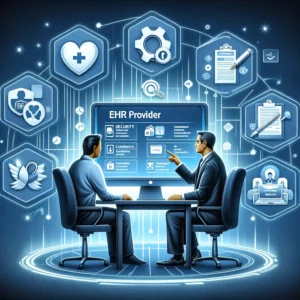
Moreover, EHR providers are always at the forefront of industry best practices and advancements in electronic medical record technology. This means they can offer insights into the latest features, security protocols, and compliance requirements, ensuring that legal professionals are not only using EMRs effectively but also adhering to current legal and regulatory standards. Regular consultations with an EHR provider can keep attorneys updated on new tools and functionalities that could enhance their practice, such as improved data analytics, advanced search capabilities, and more robust collaboration tools. By staying informed about these advancements, legal teams can maintain a competitive edge, providing their clients with the highest level of service and ensuring that they are prepared to handle complex personal injury cases with the utmost efficiency and accuracy.
Transitioning from paper to electronic medical records (EMRs) offers numerous advantages for healthcare providers and legal professionals. EMRs enhance efficiency and organization by enabling rapid retrieval and detailed documentation of patient data, which is crucial for personal injury cases. They also facilitate enhanced collaboration and communication among healthcare teams, ensuring seamless information sharing while adhering to HIPAA regulations for data security. Despite the challenges of initial costs and learning curves, the long-term benefits of improved case management, stronger case building, and streamlined processes make EMRs a valuable investment in modern healthcare and legal practices. Transitioning to EMRs not only improves operational efficiency but also supports better patient outcomes and more effective legal advocacy.



